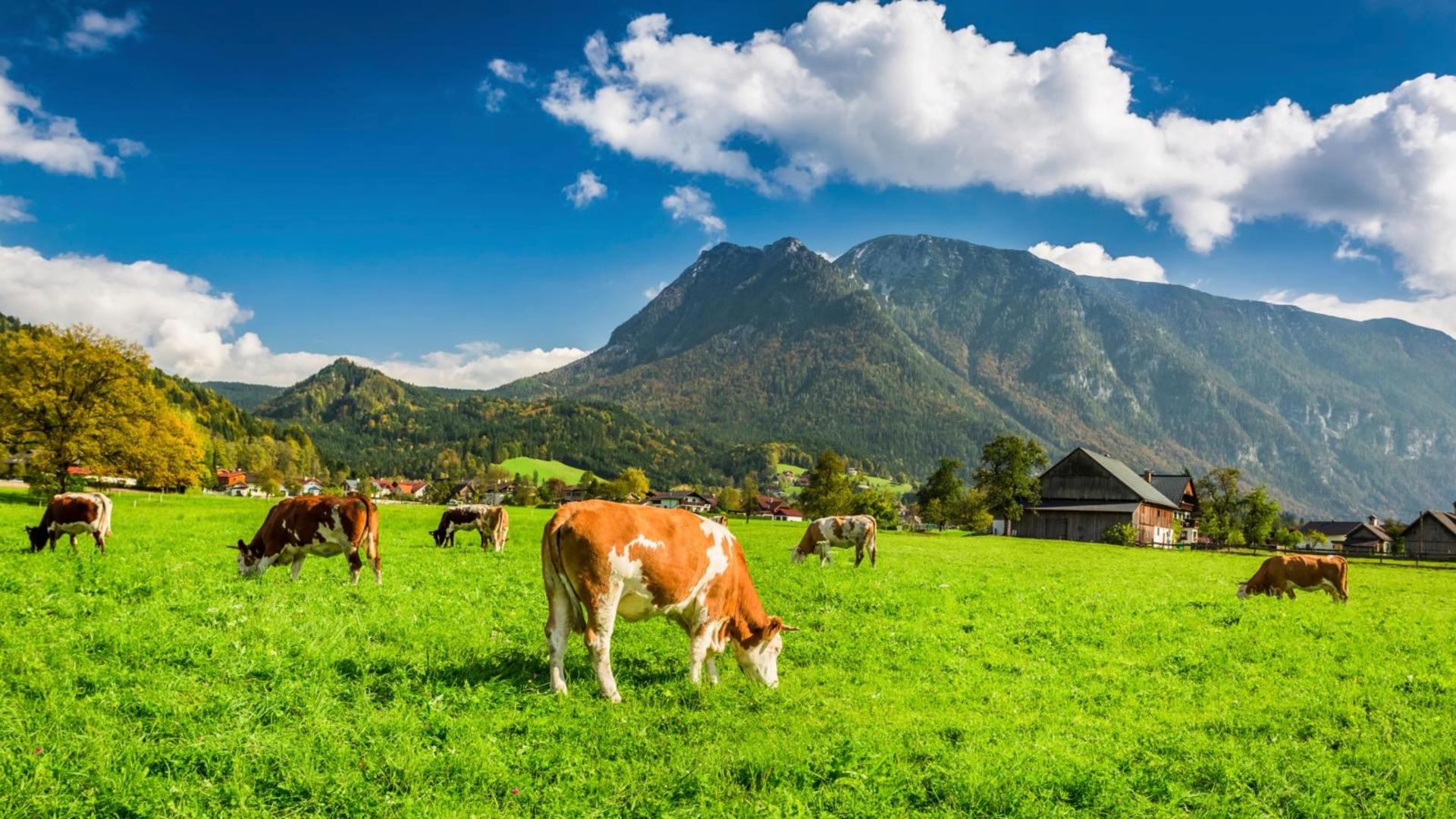
Food waste
Saving food and helping people
A visit to "Tischlein deck dich": members of the FMC Executive Board support the team on site.
navigation

Climate & energy
While digesting, cows release methane, a gas that’s hazardous for the climate. We explain how this can change and how Migros is involved.
It's a part of rumination, so there’s no point in mincing words: cows fart and burp. And the latter in particular releases lots of methane – about 100 kilos a year each. This greenhouse gas is 27 times as damaging as CO₂. There are about 680,000 cows in Switzerland, of which 550,000 are dairy cows. The digestion of the latter group alone accounts for 4.8% of Switzerland’s total greenhouse gas emissions.
What if cows ate feed that made them emit less gas? That’s precisely the question that the agricultural cooperative fenaco asked itself. In 2021, it launched some methane-reducing feed.
«The feed is specially adapted to dairy cows and their needs in terms of minerals»
This feed, produced by the Swiss company Agolin SA, contains a mixture of natural plant extracts such as coriander seed oil, clove leaves and geraniol. “The feed is specially adapted to dairy cows and their needs in terms of minerals,” says Anita Schwegler, fenaco’s Head of Corporate Sustainability and Environment. Most importantly, the feed ensures that the animals fart and burp less methane. According to a review of several scientific studies, published in 2021, the new feed reduces methane emissions by an average of 9% per cow.
The climate-friendly feed may be more expensive, but farmers needn’t pay more for it than for conventional feed. That’s because the Migros Climate Fund and other involved organisations pick up the tab for the difference in price. Migros runs the fund together with myclimate in order to meet the Migros Group’s climate goals.
The less methane cows emit, the better the climate footprint of milk. Two hundred farms currently use this climate-friendly feed, and some 6,000 dairy cows eat it. The project is already saving lots of methane, cutting emissions by the equivalent of 2,100 tonnes of CO₂ (known as “CO₂ equivalents”). That’s as much as flying from Zurich to New York and back 1,050 times. Of course there’s still room for improvement. If all dairy cows ate the feed, this figure could be a hundred times greater. “For a reduction of 200,000 tonnes of CO₂ equivalents, all the dairy cows in Switzerland would have to eat our feed. That’s a hypothetical scenario,” Schwegler says. “We estimate it’ll be at least 20,000 tonnes in the coming years.”
Sustainability is part of our culture and we still have plenty more on our agenda. Learn more about it in our Stories!